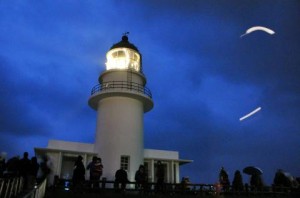 We all know what collective nouns are do we not? OK, I had completely forgotten the English language term until I saw the title above.
We all know what collective nouns are do we not? OK, I had completely forgotten the English language term until I saw the title above.
Collective nouns are the names given to collections or groups, be they beasts, birds, people or things. It is a naturally occurring phenomenon in many languages of the world e.g. English, German, Swedish, etc.
We have all heard of a a pack of coyotes, a flock of birds, a troop of Boy Scouts, and a fleet of cars.
The use of collective nouns started back in the 14th and 15th centuries to designate collections of wildlife in hunting terminology (Wikipedia) but where did the term a plague of lighthouse keepers come from?
According again to Wikipedia, “A Plague of Lighthouse Keepers” is a track from the British band Van der Graaf Generator’s fourth album Pawn Hearts (1971). It is notable for being a concept piece over 23 minutes long, which comprises the whole B-side of the album.
Now this collective noun has never been used before as far as I can find out, and will probably now become embedded into the English language as another collective noun. Although sounding deadly as in infectious, the term in this case, as explained by the composer means a gathering as in “a pride of lions, a murder of crows, so a plague of lighthouse-keepers“.
This term will not in general be used very often as a plague of lighthouse keepers is a very rare commodity, as mentioned in my article Our First Union Meeting-Nov. 13, 1994. Because of their isolation, lighthouse keepers do not get together very often in a group or gathering.
For those of you interested in hearing the musical piece, it is available on Youtube.
[media url=”http://www.youtube.com/embed/gDVpGqjOLlE” width=”400″ height=”350″]
Also, the lyrics and other information is available in a Google Search.
OK, that is solved. Now what are we going to call a group of lighthouses? Any suggestions? Again this is a very rare occurrence except at a river mouth, harbour opening, etc. Maybe a confluence of lighthouses? or? Any suggestions?


